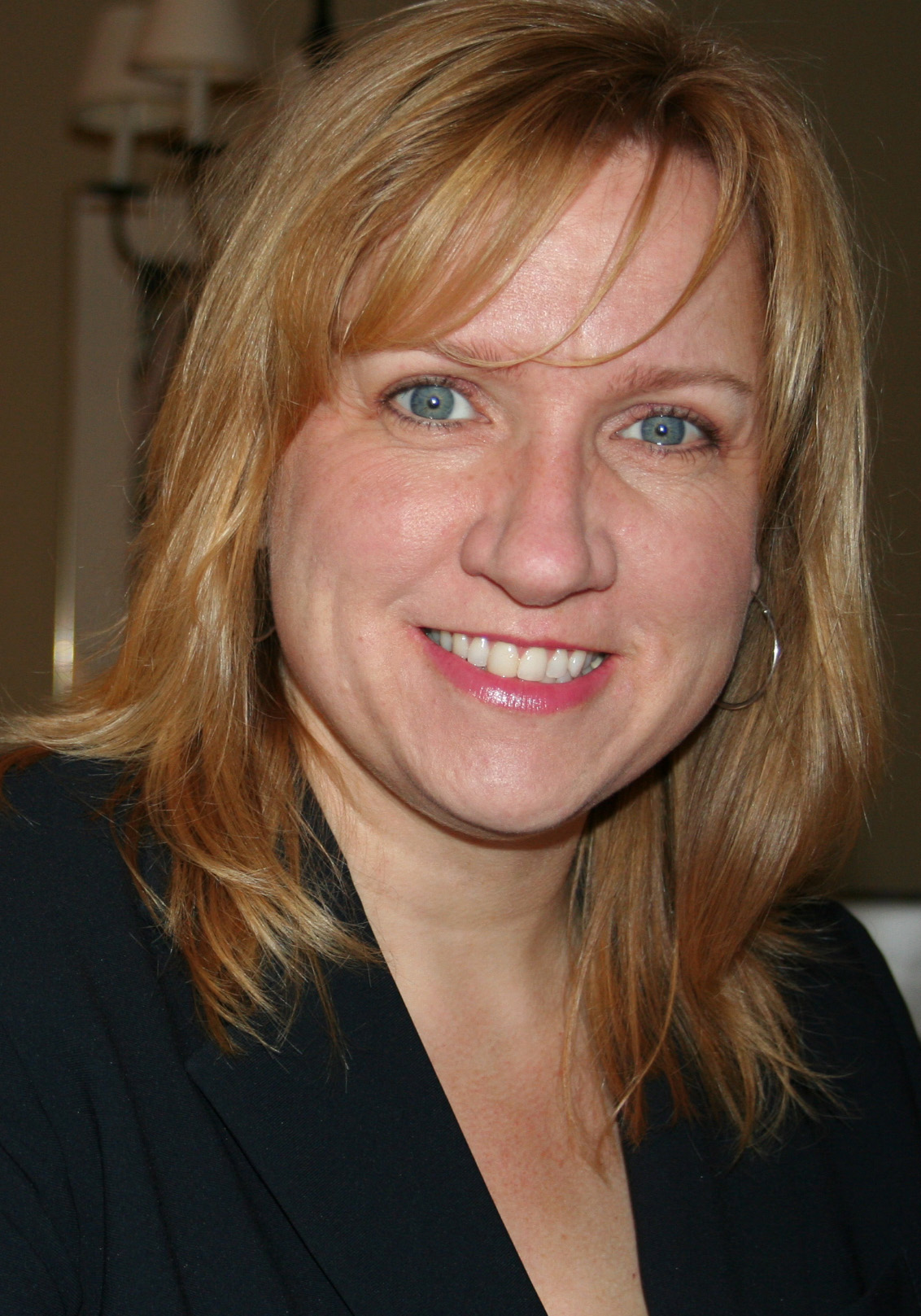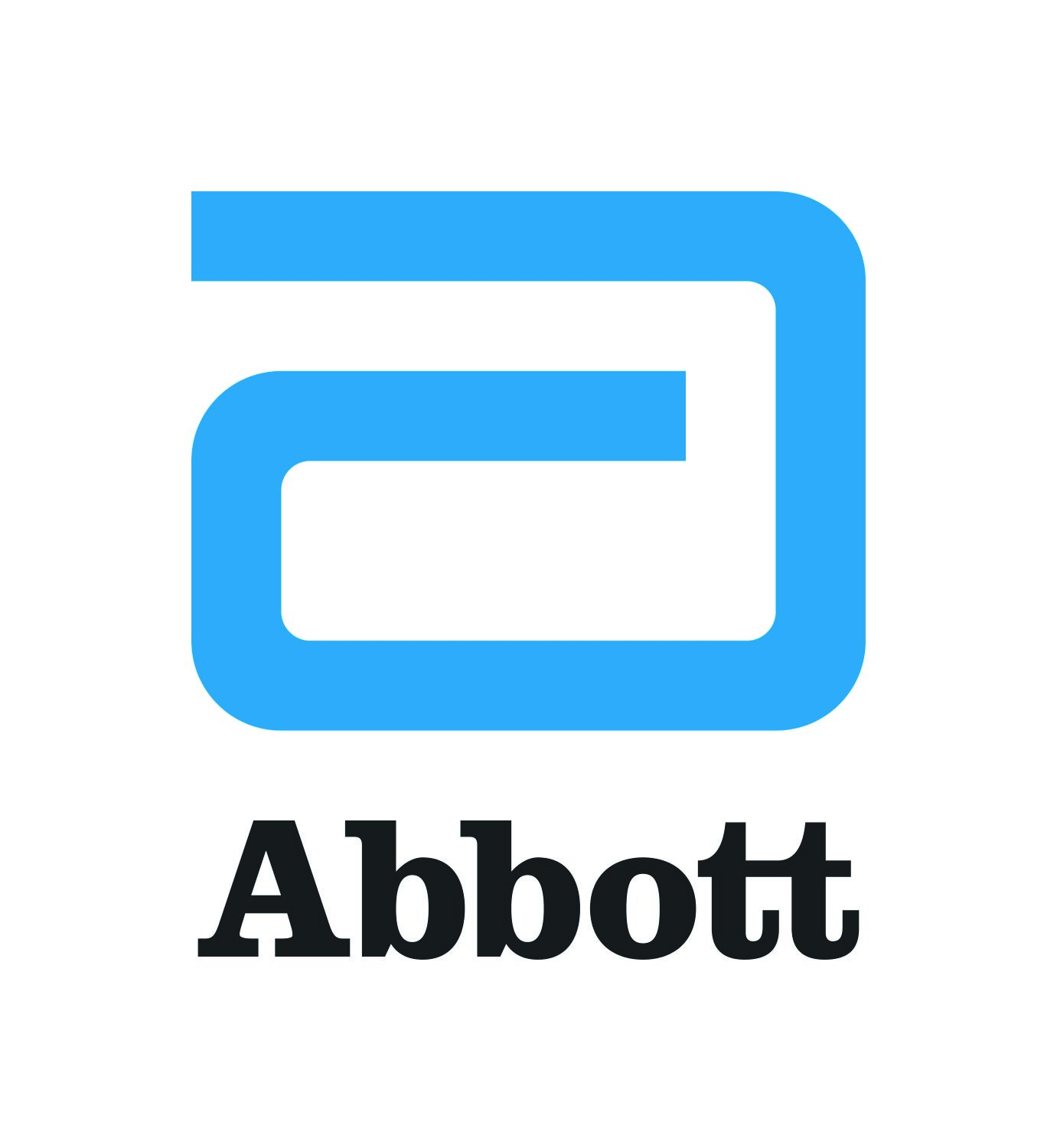
“We had employees who thought it was too late to make changes. Once they were connected to a program with monitoring tools, they realized they still had options. That sense of empowerment helped them take control”
LANA BURNStad,�epcor utilities

“Employers should review coinsurance levels, maximums, and coverage for diabetes educators and monitoring devices. If people are forced to choose between cost and care, many will forgo treatment, and the long-term costs will rise”
KIM SIDDALL,�PEOPLE CORPORATION

In Partnership with
Diabetes at work: prevention becomes business critical
Canadian experts call for a preventative approach and real-time tools to manage a growing driver of benefits costs
Read on


Kim Siddall
People Corp.


Alexis Wise
Sun Life


Lana Burnstad
EPCOR Utilities



Industry experts
DIABETES is one of the defining health challenges of our time, and it’s no longer a condition that employers can leave to the healthcare system to manage. The IDF Diabetes Atlas 2025 indicates that people living with diabetes globally are projected to rise to 642 million by 2040.1 With effective measures proven to slow the rise in new diagnoses and reduce the devastating consequences of the disease − from disability to premature death − the case for prevention could not be stronger.
For employers, the implications are not abstract. In Canada, approximately four million people live with diabetes today,2 a number expected to rise to five million by 2033. Every year, the condition contributes to hundreds of dollars per employee in lost productivity. The position paper “Reducing the Risk of Type 2 Diabetes through Workplace Programs” published by Diabetes Canada indicates the cost of type 2 diabetes per employee is approximately $412 per year due to reduced productivity (presenteeism) and $1,042 per employee per year due to absenteeism.3
These numbers are spurring a change in how employers and insurers are responding. Instead of viewing diabetes as solely a personal medical issue, organizations are beginning to treat it as a workplace concern − one that influences productivity and the long-term sustainability of benefit plans. Prevention programs, integrated wellness strategies, and innovative tools such as sensing-based glucose monitoring are shifting the conversation from managing costs to supporting employees before chronic illness becomes unmanageable.
To better understand these proactive measures, Benefits and Pensions Monitor convened a discussion with three leaders approaching the issue from different vantage points: Kim Siddall, national vice president of client strategy at People Corp; Alexis Wise, vice president of health products and partnerships at Sun Life; and Lana Bernstad, senior manager of benefits, abilities, and wellness at EPCOR Utilities.
Together, they explore the rising costs of diabetes, the importance of early intervention, and how employers can integrate new tools to support employees while preserving the long-term sustainability of their benefit plans.
Siddall adds that the disease often hides in the background of other cases. “Even when diabetes is not the reason an employee is off work, it can complicate recovery.”
“With an aging workforce and more chronic disease, including diabetes, it’s important that plans provide support so people can manage their health and stay well, reducing disability claims.”
For Siddall, the question is whether benefit coverage supports these innovations. She urges employers to review their plans to ensure they aren’t creating barriers to care. “If people face out-of-pocket costs that are too high, they will make decisions not to comply with treatment. Those choices drive higher costs down the road. That means looking at maximums, coinsurance levels, and coverage for things like monitoring devices, diabetes educators, and adjunctive supports.”
By making these technologies accessible, workplaces can help employees prevent complications that lead to absenteeism and disability. The result is healthier employees, but also more sustainable plans.
As the panelists emphasize, the challenge cannot be reduced to claims data alone.
Bernstad explains that diabetes reaches into areas employers do not always consider, increasingly cropping up not just across HR but in other departments such as health and safety. When it comes to safety-sensitive employees with diabetes, for example, the questions become: Are they alert? Are they able to perform their functions and duties? “We’re moving from a two-dimensional kind of wellness platform to a three-dimensional wellness form,” she says. “It is a more integrated approach. It’s a blanket over everything that we do when looking at chronic illness and wellness.”
This shift toward a more holistic view echoes what Sun Life has seen in its data. Wise notes that the rise in claims reflects a broader trend in chronic disease prevalence. She finds employers are sometimes surprised when they see how widespread conditions like diabetes are within their workforce.
Technology is important, but the panelists stressed that prevention remains the most powerful lever. Research suggests that up to 90 percent of type 2 diabetes cases5 could be delayed or prevented through lifestyle changes. For employers, prevention means engaging employees before chronic illness takes hold.
At EPCOR, Bernstad’s team launched a diabetes awareness campaign that became one of their most successful wellness initiatives. “We placed apples on desks with invitations to a health fair, shared brochures, and connected employees to the Sun Life Diabetes Care Program,” she recalls. “Participation was higher than we expected, and many employees signed up for ongoing coaching. It showed us that awareness, when done in a practical and approachable way, really works.”
As Siddall points out, even the financial case is clear: projecting the cost of doing nothing often shows a steeper curve than the upfront investment in prevention and support.
Prevention also requires benefit structures that do not discourage care. Siddall further highlights that plan design is often overlooked. “Employers should review coinsurance levels, maximums, and coverage for diabetes educators and monitoring devices. If people are forced to choose between cost and care, many will forgo treatment, and the long-term costs will rise.”
The challenge for employers is not recognizing the importance of prevention and support but balancing these efforts with the need for sustainable benefit plans. Prevention requires investment, and results often take years to appear. But the cost of inaction is steep.
The rising prevalence of diabetes has made it one of the top cost drivers in Canadian benefit plans. At Sun Life, claims related to diabetes medications grew nearly 30 percent between 2019 and 2023,6 now ranking as the second-highest category of drug spend. “We are watching this very carefully,” says Wise. “The growth we see in claims mirrors what we know about prevalence. It is a category of concern for employers, insurers, and employees alike.”
The costs, however, are not confined to pharmacy benefits. Employees managing diabetes are more likely to take additional days off work, ranging from two to ten per year. According to Wise, diabetes is also a complicating factor in long-term disability: “Roughly 20 percent of our long-term disability cases involve diabetes as a comorbidity. Even when it is not the primary cause of absence, it makes claims more complex and costly to manage.”
Bernstad has seen at EPCOR how diabetes complicates day-to-day disability management. “When we brought short-term disability in-house, it gave us more insight into what was happening with our employees,” she says. “It can make cases harder to manage, recovery slower, and return-to-work planning more complicated.”
Bernstad also emphasizes that diabetes often carries an emotional toll. Anxiety and uncertainty can be just as disruptive as physical symptoms, which is why layering supports on top of awareness campaigns proved so effective at EPCOR. “Adding supports was a game changer, because anxiety often accompanies diabetes, and managing both is important” she notes, recalling employees who discovered resources not only for themselves but also for family members impacted by diabetes.
By integrating wellness into every layer of the organization, removing barriers to care, and supporting employees with innovative tools, companies can shift from a two-dimensional focus on claims and costs to a three-dimensional approach that fosters healthier, more resilient workplaces.
Tools that change the equation
While diabetes has long been viewed as a disease of escalating costs, emerging technology and tools are giving employees and employers ways to change that trajectory. Among the most significant advances are sensing-based glucose monitoring systems such as Abbott Laboratories’ FreeStyle Libre.4 Unlike traditional finger-prick methods, these devices provide continuous, real-time readings, showing individuals how food, exercise, or stress affect their blood sugar.
“When employees have that kind of feedback, they are better able to manage their condition day to day,” Wise says. “In structured programs we’ve run, 95 percent of participants stabilized their A1C levels within weeks, and about 40 percent were able to reduce or reconsider their medication. That is the kind of impact that changes not only individual health but organizational outcomes.”
Wise adds that real-time feedback also changes how clinicians engage with patients. “When plan members can share data with their health providers, it makes those conversations more productive. It shifts the role of monitoring from something reactive to something that empowers both the patient and the care team.” ��Bernstad describes how access to monitoring and coaching shifted employee attitudes at EPCOR. “We had employees who thought it was too late to make changes. Once they were connected to a program with monitoring tools, they realized they still had options. That sense of empowerment helped them take control and engage more with their health.”

Abbott is a global leader in diabetes care, delivering innovative technologies that support people living with diabetes and the healthcare professionals who care for them. Accurate glucose monitoring is essential to effective diabetes management, and Abbott continues to enhance how glucose data is measured, tracked, and analyzed through trusted solutions like the FreeStyle Libre systems. With a strong focus on accessibility, education, and support, Abbott is transforming diabetes care and empowering Canadians to take control of their health with confidence.

Siddall has been a group benefits management professional for over 20 years. She is passionate about helping employers understand and manage their employee health risks and providing them with meaningful and strategic solutions for their unique needs.
Vice president, client strategy, People Corp.
Kim Siddall

Wise’s professional career has focused on driving positive impact for individuals and communities through redesigning system level incentives and building business strategies that positively impact health and well-being. She has worked in a variety of strategy, innovation, and implementation roles across the private, public, and non-profit sectors, and always prioritizes working with a great team on meaningful problems.
Vice president, health products and partnerships, Sun Life
Alexis Wise

Burnstad is a seasoned HR executive with a master’s degree and 25 years of transformative leadership in human resource management. Expert in crafting comprehensive strategies for pensions, benefits, wellness programs, and abilities management, Burnstad has a proven track record of seamlessly integrating HR initiatives into core business operations and planning cycles, driving organizational success. She is also a skilled mediator and coach who champions workplace health and safety.
Senior manager of benefits, abilities, and wellness at EPCOR Utilities
Lana Burnstad
Fighting for
the customer
The customer owned a bank saw a huge boost after the Hayne Royal Commission. One year on and their market share is growing as customer continue to see their value.
Read on


Stewart Saunders
Heritage Bank


Darren McLeod
Beyond Bank


Fernando Lemos
Bank Australia



Industry experts

Lorem ipsum dolor sit amet, consectetur adipiscing elit. Tellus in penatibus condimentum malesuada ante vulputate nisi, arcu leo. Amet urna sapien purus vestibulum fermentum a. Cursus metus massa donec sed varius. Nunc enim sit morbi lacus, molestie et nunc. Nullam sed facilisi id malesuada. Ante purus velit, quam scelerisque ultrices scelerisque donec.
Velit egestas vel ornare pellentesque ridiculus. Mauris tempor augue quis mattis suspendisse feugiat commodo posuere. Faucibus massa adipiscing nullam elit, ac vel accumsan. Phasellus eget ac dignissim fermentum ac placerat elit, metus. Nulla porttitor ante egestas molestie quis quam. Pharetra magna sit mauris tellus gravida rutrum libero sit. Justo orci cras euismod proin massa lorem ut. In non tellus phasellus faucibus ullamcorper nullam odio dui et.
Bank Australia
Fernando Lemos

Lorem ipsum dolor sit amet, consectetur adipiscing elit. Tellus in penatibus condimentum malesuada ante vulputate nisi, arcu leo. Amet urna sapien purus vestibulum fermentum a. Cursus metus massa donec sed varius. Nunc enim sit morbi lacus, molestie et nunc. Nullam sed facilisi id malesuada. Ante purus velit, quam scelerisque ultrices scelerisque donec.
Velit egestas vel ornare pellentesque ridiculus. Mauris tempor augue quis mattis suspendisse feugiat commodo posuere. Faucibus massa adipiscing nullam elit, ac vel accumsan. Phasellus eget ac dignissim fermentum ac placerat elit, metus. Nulla porttitor ante egestas molestie quis quam. Pharetra magna sit mauris tellus gravida rutrum libero sit. Justo orci cras euismod proin massa lorem ut. In non tellus phasellus faucibus ullamcorper nullam odio dui et.
Beyond Bank
Darren McLeod

Lorem ipsum dolor sit amet, consectetur adipiscing elit. Tellus in penatibus condimentum malesuada ante vulputate nisi, arcu leo. Amet urna sapien purus vestibulum fermentum a. Cursus metus massa donec sed varius. Nunc enim sit morbi lacus, molestie et nunc. Nullam sed facilisi id malesuada. Ante purus velit, quam scelerisque ultrices scelerisque donec.
Velit egestas vel ornare pellentesque ridiculus. Mauris tempor augue quis mattis suspendisse feugiat commodo posuere. Faucibus massa adipiscing nullam elit, ac vel accumsan. Phasellus eget ac dignissim fermentum ac placerat elit, metus. Nulla porttitor ante egestas molestie quis quam. Pharetra magna sit mauris tellus gravida rutrum libero sit. Justo orci cras euismod proin massa lorem ut. In non tellus phasellus faucibus ullamcorper nullam odio dui et.
Heritage Bank
Stewart Saunders
Fighting for
the customer
The customer owned a bank saw a huge boost after the Hayne Royal Commission. One year on and their market share is growing as customer continue to see their value.
Read on


Stewart Saunders
Heritage Bank


Darren McLeod
Beyond Bank


Fernando Lemos
Bank Australia



Industry experts
Share


Share




Share



Beyond cost: the workplace impact
Published Oct 20, 2025









BENEFITS OF FLASH GLUCOSE MONITORING
Greater than 50% reduction in workplace absenteeism
Real world data demonstrates 50% reduction in workplace absenteeism in 1 year for people with type 1 diabetes (5.8% vs. 2.9%, p<0.0001)1 and 58% reduction in 6 months for people with type 1 and type 2 diabetes (18.5% vs. 7.7%; p<0.05)2
Improved treatment satisfaction (p<0.0001)1 and reduced disease burden2, 3 measured by validated tools (SF-36,1 EQ-SD,2,3 EQ-VAS2 and SF-122,3)
Higher treatment satisfaction and quality of life
Decreased HbA1c of 4% in 1 year (p<0.001)2
Decrease in hypoglycemic events in 1 year (p<0.00011; p<0.052)
Improved glycemic control
“When plan members can share data with their health providers, it makes those conversations more productive. It shifts the role of monitoring from something reactive to something that empowers both the patient and the care team”
ALEXIS WISE, SUN LIFE HEALTH

From awareness to prevention
Costs that are impossible to ignore
Notes
International Diabetes Federation, IDF Diabetes Atlas 2025, 11th Edition |, IDF Diabetes Atlas 2025 | Global Diabetes Data & Insights
Diabetes Canada. Change the Conversation About Diabetes. https://www.diabetes.ca/about-diabetes-canada/change-the-conversation-about-diabetes
Diabetes Canada. “Reducing the Risk of Type 2 Diabetes Through Workplace Programs,” https://www.diabetes.ca/advocacy---policies/our-policy-positions/reducing-the-risk-of-type-2-diabetes-through-workplace-programs
Discover the coverage for FreeStyle Libre Systems, https://www.freestyle.abbott/en-ca/home.html
Harvard T.H. Chan School of Public Health. “Simple Steps to Preventing Diabetes,” https://nutritionsource.hsph.harvard.edu/disease-prevention/diabetes-prevention/preventing-diabetes-full-story/
Sun Life. “A Chronic Issue – Disease Rates Climbing among Young Canadians,” https://www.sunlife.com/en/newsroom/news-releases/announcement/a-chronic-issue---disease-rates-climbing-among-young-canadians/123924/



About
Directories
Resources
Investments
Pensions
benefits
News

RSS
Sitemap
Privacy
Contact us
About us
External contributors
Authors
Terms & Conditions
Terms of Use
Subscribe
People
Companies
Copyright © 1996-2025 KM Business Information Canada Ltd.




We have real-world data that looked at workers managing their diabetes with the use of the sensor-based glucose monitoring technology. In these studies, the individuals used FreeStyle Libre to monitor their glucose levels and used that information to adjust their lifestyle habits.
SMARTER MONITORING, HEALTHIER OUTCOMES
The primary and secondary measures included changes in HbA1c before and after the individuals started using FreeStyle Libre, their time off sick, their quality of life, and their treatment satisfaction.
What we found from the data is that workplace absenteeism was significantly reduced by between 50% and 58% among individuals after one year of using flash glucose monitoring technology. The improvement suggests that better glucose visibility and control can translate into fewer sick days .
Other outcomes included decreased HbA1c in 1 year, reduced disease burden and hypoglycemic episodes with patients experiencing less severe hypoglycemia. They also reported an increase in treatment satisfaction.
It’s important for individuals with diabetes to manage their glucose levels without pricking their fingers all the time, allowing them to make the right decisions at mealtime, or it could motivate them to move more.






About
Directories
Resources
Investments
Pensions
Benefits
News




RSS
Sitemap
Privacy
Contact us
About us
External contributors
Authors
Terms & Conditions
Terms of Use
Subscribe
People
Companies

Copyright © 1996-2025 KM Business Information Canada Ltd.



About
Directories
Resources
Investments
Pensions
Benefits
News




RSS
Sitemap
Privacy
Contact us
About us
External contributors
Authors
Terms & Conditions
Terms of Use
Subscribe
People
Companies
Copyright © 1996-2025 KM Business Information Canada Ltd.




1. Charleer et al. Diabetes Care (2019). https://doi.org/10.2337/dc19-1610
2. Fokkert et al. (2019). BMJ Open Diabetes Research & Care. doi: 10.1136/
bmjdrc-2019-000809
3. Lameijer et al. BMJ Open Diabetes Research and Care (2021). doi: 10.1136/
bmjdrc-2021-002124

Lorem ipsum dolor sit amet, consectetur adipiscing elit. Tellus in penatibus condimentum malesuada ante vulputate nisi, arcu leo. Amet urna sapien purus vestibulum fermentum a. Cursus metus massa donec sed varius. Nunc enim sit morbi lacus, molestie et nunc. Nullam sed facilisi id malesuada. Ante purus velit, quam scelerisque ultrices scelerisque donec.
Velit egestas vel ornare pellentesque ridiculus. Mauris tempor augue quis mattis suspendisse feugiat commodo posuere. Faucibus massa adipiscing nullam elit, ac vel accumsan. Phasellus eget ac dignissim fermentum ac placerat elit, metus. Nulla porttitor ante egestas molestie quis quam. Pharetra magna sit mauris tellus gravida rutrum libero sit. Justo orci cras euismod proin massa lorem ut. In non tellus phasellus faucibus ullamcorper nullam odio dui et.
Heritage Bank
Stewart Saunders


Lorem ipsum dolor sit amet, consectetur adipiscing elit. Tellus in penatibus condimentum malesuada ante vulputate nisi, arcu leo. Amet urna sapien purus vestibulum fermentum a. Cursus metus massa donec sed varius. Nunc enim sit morbi lacus, molestie et nunc. Nullam sed facilisi id malesuada. Ante purus velit, quam scelerisque ultrices scelerisque donec.
Velit egestas vel ornare pellentesque ridiculus. Mauris tempor augue quis mattis suspendisse feugiat commodo posuere. Faucibus massa adipiscing nullam elit, ac vel accumsan. Phasellus eget ac dignissim fermentum ac placerat elit, metus. Nulla porttitor ante egestas molestie quis quam. Pharetra magna sit mauris tellus gravida rutrum libero sit. Justo orci cras euismod proin massa lorem ut. In non tellus phasellus faucibus ullamcorper nullam odio dui et.
Beyond Bank
Darren McLeod


Lorem ipsum dolor sit amet, consectetur adipiscing elit. Tellus in penatibus condimentum malesuada ante vulputate nisi, arcu leo. Amet urna sapien purus vestibulum fermentum a. Cursus metus massa donec sed varius. Nunc enim sit morbi lacus, molestie et nunc. Nullam sed facilisi id malesuada. Ante purus velit, quam scelerisque ultrices scelerisque donec.
Velit egestas vel ornare pellentesque ridiculus. Mauris tempor augue quis mattis suspendisse feugiat commodo posuere. Faucibus massa adipiscing nullam elit, ac vel accumsan. Phasellus eget ac dignissim fermentum ac placerat elit, metus. Nulla porttitor ante egestas molestie quis quam. Pharetra magna sit mauris tellus gravida rutrum libero sit. Justo orci cras euismod proin massa lorem ut. In non tellus phasellus faucibus ullamcorper nullam odio dui et.
Bank Australia
Fernando Lemos
